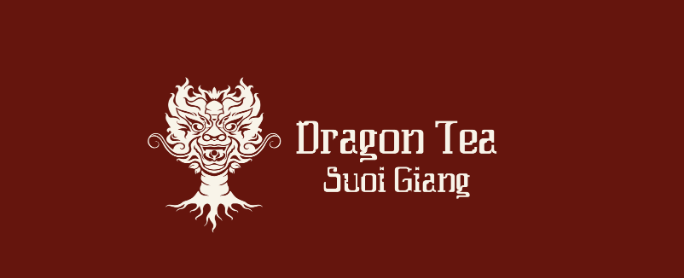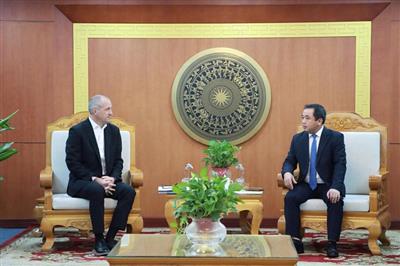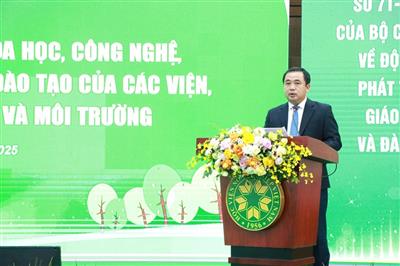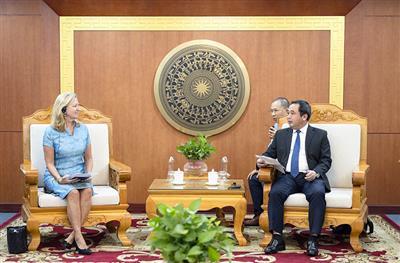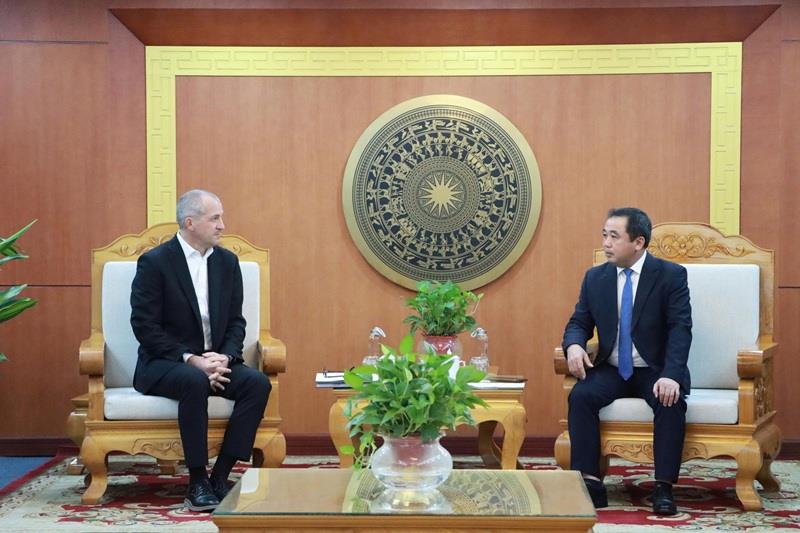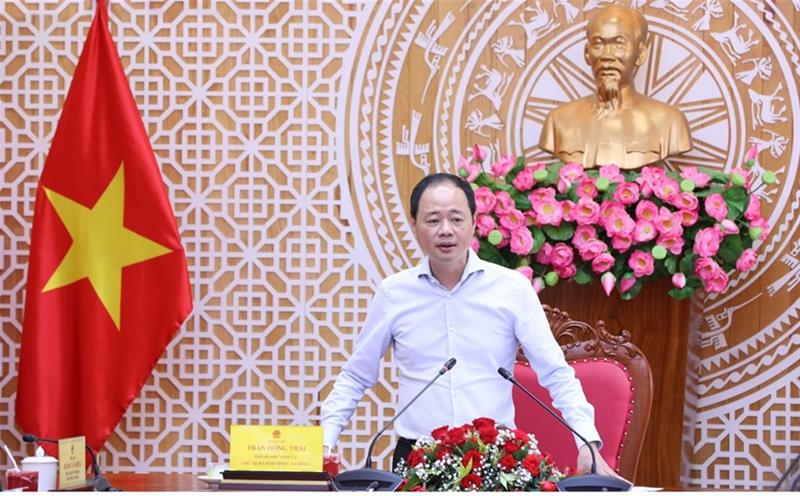
Viet Nam promotes the role of communities in economic development linked with environmental protection
14/11/2025TN&MTThroughout Viet Nam’s development journey, communities have always been the foundation of its sustainable strength. In particular, in agriculture and the environment, the direct participation of local people has played a crucial part in maintaining livelihoods and conserving and restoring natural values.
The historic role of communities in sustainable development
Throughout Viet Nam’s development journey, communities have always been the foundation of its sustainable strength. In particular, in agriculture and the environment, the direct participation of local people has played a crucial part in maintaining livelihoods and conserving and restoring natural values. Within this process, local communities—especially rural communities—have consistently held a central role, ensuring food security while also pioneering the introduction of green development models into practice during the era of Doi Moi and international integration.
In the past, natural resource management was organized through traditional conventions and local regulations (hương ước), built on community consensus with the shared goal of protecting finite resources. This created a sustainable indigenous foundation—from safeguarding upstream forests and ensuring fair irrigation water distribution to setting seasonal fishing rules to preserve natural resources.
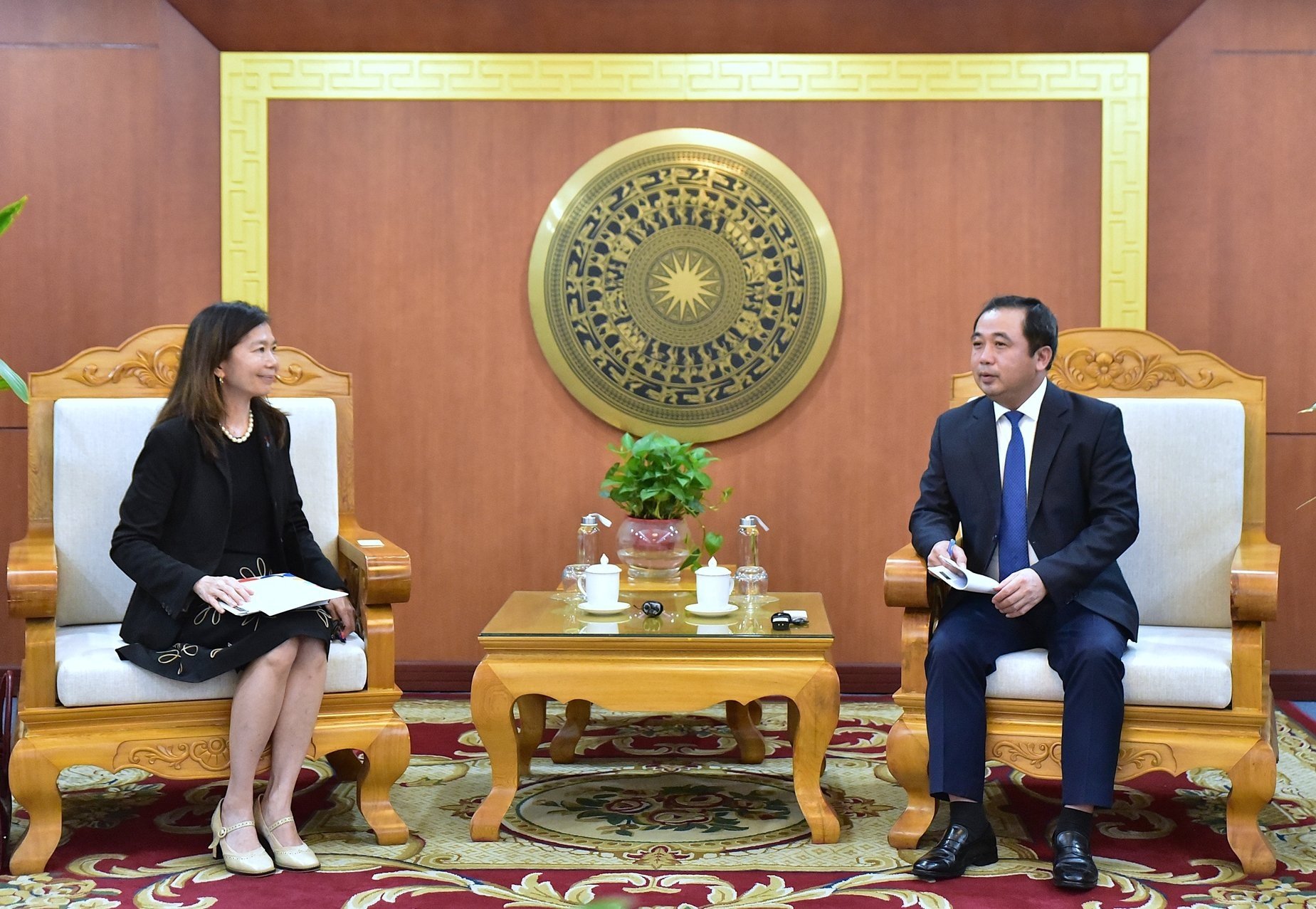
Minister Tran Duc Thang received Ms. Pauline Tamesis, UN Resident Coordinator in Vietnam, on the afternoon of August 19
Today, in the face of climate change, resource degradation, and the pressures of urbanization, communities once again affirm their central role in the path toward sustainable development. They are policy beneficiaries and direct actors—protecting forests, planting mangroves, managing fisheries, sorting waste, and advancing ecological agriculture and the circular economy. The results demonstrate that empowering communities is essential to link economic development with environmental protection while meeting Vietnam’s international commitments on climate action and sustainable development.
Throughout Vietnamese history, strict rules governing the use of natural resources have been established. Traditional local and village conventions often included provisions to protect upstream forests, safeguard shared water sources, ensure fair distribution of irrigation flows, and regulate seasonal fishing to conserve aquatic resources. These agreements laid the groundwork for a community-based system of natural resource management.
After the war, when Vietnam remained poor and underdeveloped, the power of the people continued to be mobilized in mass movements to plant trees and restore forests, dig irrigation canals, and reclaim land for cultivation. Nationwide campaigns such as "Tết trồng cây" (“New Year Tree Planting Festival”) and "Thủy lợi là quốc sách" (“Irrigation as a National Policy”) relied heavily on community solidarity. Thanks to these movements, Vietnam gradually overcame food shortages, stabilized agricultural production, and improved rural livelihoods.
Significant transformation during the era of Doi Moi and economic integration
Since the launch of Doi Moi in 1986, policies such as land and forest allocation have given local people clearer rights over natural resources. The Payments for Forest Environmental Services (PFES) policy, introduced in 2010, created a sustainable economic incentive by channeling trillions of Vietnamese Dong annually from hydropower companies, clean-water suppliers, and ecotourism enterprises to communities in return for forest protection. This pioneering model has transformed public awareness—forests are now seen not as resources for exploitation but as long-term “green banks” providing livelihoods and vital ecosystem services.
Outstanding achievements in linking economic development with environmental protection and strengthening community roles
Thanks to these policies, Vietnam has achieved many remarkable results. The country’s forest cover has increased from 27% in 1990 to more than 42% today, making Vietnam a leading example in Southeast Asia and contributing to greater carbon sequestration to help meet its international commitments regarding climate change. Fishery resources in areas practicing co-management have gradually recovered, reducing conflicts over fishing grounds. Nationwide anti-plastic-waste campaigns have also spread vigorously from the central to the local level, fostering a green lifestyle in urban communities. In agriculture, thousands of OCOP (One Commune One Product) goods and hundreds of organic production cooperatives have been established, creating new value chains, raising household incomes, promoting a green economy, and forming environmentally friendly circular production models that open new development pathways for rural Vietnam.
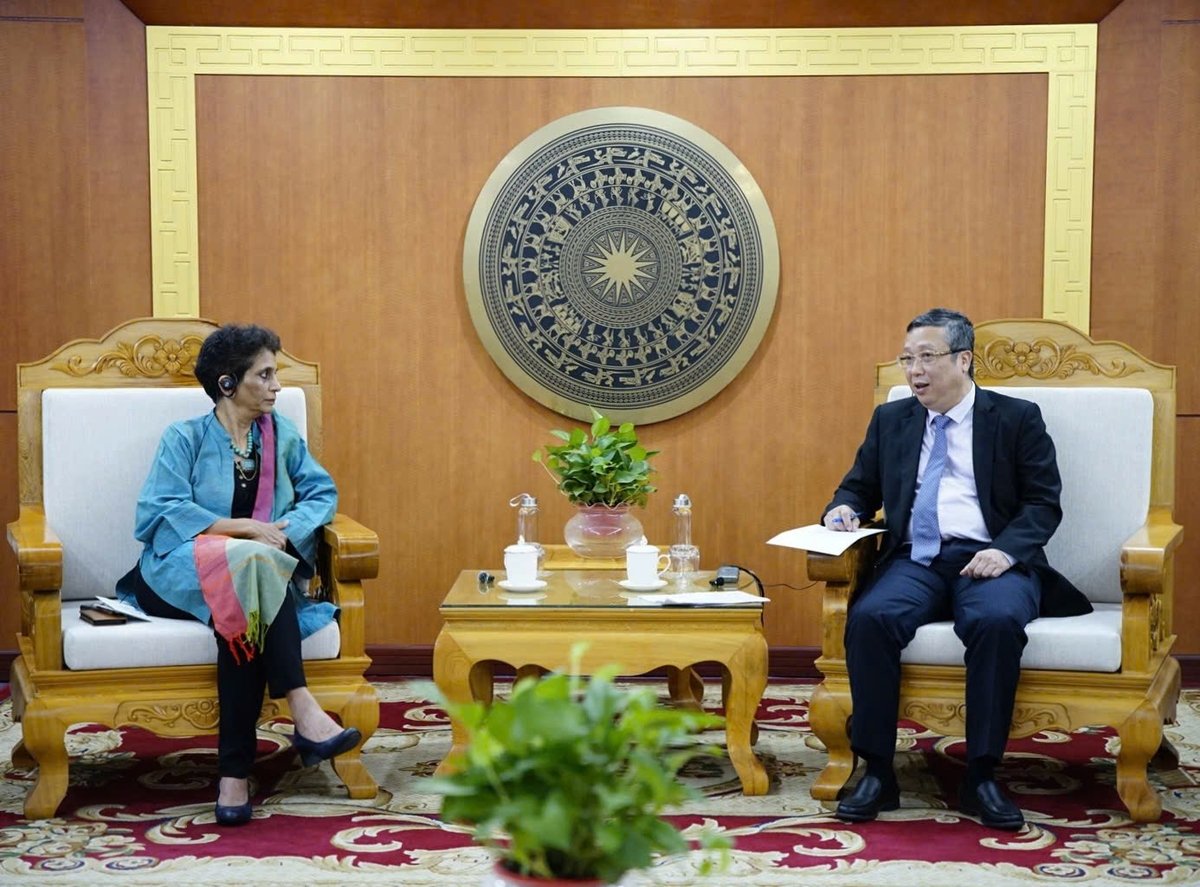
On September 4 in Hanoi, Deputy Minister Hoang Trung welcomed Ms. Kanni Wignaraja, UN Assistant Secretary-General and UNDP Regional Director for Asia-Pacific, reaffirming UNDP’s support for Vietnam’s NDC 3.0, EPR, and green carbon initiatives
Community-based development does not only stop at maintaining local livelihoods, but also opens up wider opportunities for connection with markets and businesses. By 2025, Vietnam will have over 800 agricultural cooperatives, of which nearly 300 have been newly established in the past 5 years, with many effective operating models and an average revenue of over 5 billion VND/year. Among them, many organic agricultural cooperatives, ecological shrimp farming groups, or handicraft production groups have become reliable supply partners for supermarket chains, export enterprises, or e-commerce platforms. This connection helps the community access stable markets and increase product value through green certification, traceability, and international standards. At the same time, businesses benefit from having a sustainable supply source, meeting global consumption trends, and prioritizing environmentally friendly products. Forming green value chains based on close cooperation between the community and businesses has become a channel connecting harmonious interests, promoting economic growth and encouraging sustainable production and consumption, while protecting natural resources for future generations, contributing to green and sustainable socio-economic development.
The roles of women and youth have become increasingly prominent. Rural women participate in production and establish and manage many organic agricultural cooperatives. Through technical training, brand building, supermarket distribution, and e-commerce, many of their products reach domestic and international markets, creating women- and youth-led models that unlock the younger generation’s potential in advancing the green economy. This enhances women’s status within families and communities while affirming gender equality as a key driver of sustainable development.
With their creativity and entrepreneurial ambition, young people are actively engaging in green startups—from plastic alternatives and digital applications in agriculture to small-scale circular economy models. They bring fresh energy, helping to spread green lifestyles throughout society. When women and youth work together, communities become more dynamic and more resilient.
Model community initiatives and multi-stakeholder collaboration
Sustainable development goals tied to natural resource protection have been realized through numerous successful models, programs, and projects made possible by close cooperation among the government, local communities, businesses, and development organizations, including the United Nations Development Programme (UNDP).
Based on that solid policy foundation, UNDP has accompanied the government in putting major policies into practice, turning policies into concrete and practical results for the community. A typical example is the iLandscape project, which was implemented in Lam Dong and Dak Nong and focused on sustainable landscape management through a deforestation-free local approach. With a budget of 5 million euros from the European Union and technical support from many international organizations, the project has built district-level public-private partnership (PPI) models in 4 key districts, creating a framework for regular discussions between stakeholders, including local authorities, cooperatives, agricultural production and processing enterprises, and community organizations. As a result, from 2022 to now, 25,000 hectares of natural forests have been protected, improving the livelihoods of more than 30,000 farmers, including many ethnic minorities and women, towards sustainable development and reducing greenhouse gas emissions. This model has demonstrated the power of inter-sectoral coordination, creating a solid legal and technical corridor for communities to participate in forest resource management associated with sustainable livelihoods proactively.
In the central coastal provinces, the “Improving Resilience of Vulnerable Coastal Communities to Climate Change in Viet Nam” project, funded by the Green Climate Fund, has supported the planting and restoring thousands of hectares of mangrove forests across the central region and the Mekong Delta. These mangroves serve as natural “green shields” against erosion and storm damage while creating ecological habitats for aquaculture. Local residents engaged in eco-shrimp farming within the mangrove areas can sell their products at higher prices thanks to sustainability certification. Nearly 5,000 resilient houses have been constructed alongside these efforts, enabling poor households to live more securely and reducing losses during storm and flood seasons.

On July 9, the Ministry of Agriculture and Environment, UNDP, and the World Economic Forum launched the NPAP Policy Technical Working Group
In the drought-prone South Central region, the “Strengthening the Resilience of Small-holder Agriculture to Climate Change-Induced Water Insecurity in the Central Highlands and South-Central Coast Regions of Viet Nam” project (known as SACCR), also funded by the Green Climate Fund, has been assisting thousands of farming households to build networks of climate-resilient water ponds, adopt drip-irrigation systems, and cultivate drought-tolerant crops. These solutions not only help people maintain production in harsh conditions, but also reduce disputes, increase benefit sharing from available water resources and rain, and strengthen community solidarity.
In addition, UNDP has supported numerous community-led environmental initiatives through the Global Environment Facility Small Grants Programme (SGP). This long-standing program, implemented in Viet Nam since 1999, focuses on areas such as biodiversity conservation, climate change adaptation, waste management, livelihood improvement, poverty reduction, gender equality, and empowering women, ethnic minorities, and local communities. As of June 2025, SGP has supported more than 200 projects across 45 provinces/cities and 130 communes nationwide, generating positive and lasting impacts on the environment and local communities.
SGP has helped promote community participation in co-management fishery resources in provinces such as Binh Dinh, Quang Ngai, Phu Yen, Binh Thuan, Ben Tre, Dong Thap, Ca Mau. Community-based fishery protection groups have been established, strengthened, and granted rights to manage coastal and bay areas. This has enabled sustainable fishery resource protection, contributed to the preservation of coastal ecosystems, improved local livelihoods, and reduced illegal fishing activities.
SGP has also supported coral reef protection in locations such as Quy Nhon Bay (Binh Dinh), Hon Cau Marine Protected Area (Binh Thuan), Hon Yen (Phu Yen), and Ganh Yen (Quang Ngai). The model in Quy Nhon Bay (where 42.6 hectares have been placed under community co-management for coral conservation) has achieved remarkable outcomes, including maintaining a 75% coral survival rate, the return of rare sea turtles to nest and lay eggs after years of absence, and the successful operation of community-based models for conservation and more sustainable ecotourism development.
Forest protection has also been prioritized in many areas, such as the Western Nghe An Biosphere Reserve, the Hoi An – Cu Lao Cham Biosphere Reserve, Ha Giang, Da Nang, Son La, and Dak Lak. Notable efforts include promoting land and forest allocation in Ky Son and Que Phong districts and planting and restoring Met bamboo forests in Tuong Duong district, Nghe An province. SGP has also encouraged initiatives to plant native trees to create “green firebreaks” for wildfire prevention in Hue, an effort highly valued by local authorities and now being replicated.
Significantly, SGP strengthens community livelihoods by diversifying income sources, products, and value chains. Examples include cultivating medicinal plants under forest canopies in the Western Nghe An Biosphere Reserve, developing Dao traditional herbal medicine in Nam Dam (Ha Giang), and similar initiatives in Bac Kan and Thanh Hoa, and creating value chains for Met bamboo. Building on each locality’s unique strengths, several projects have fostered community-based ecotourism models in Ky Son, Hoa Bac (Da Nang), Son La, Cam Thanh, Cam Kim, Cu Lao Cham (Hoi An), Quy Nhon Bay (Binh Dinh), Binh Son (Quang Ngai), and beyond. These models deliver dual benefits: nurturing pride in local heritage while conserving biodiversity, celebrating cultural identity, and generating additional livelihoods for residents.

Ms. Ramla Khalidi, UNDP Resident Representative in Vietnam
In addition, SGP supports community environmental protection through projects on integrated waste management and plastic reduction, focusing on household-level waste sorting and piloting circular economy models in homes and schools. These initiatives have been carried out in 20 communes across 10 provinces and cities, including Hoi An, Da Nang, Binh Duong, Ha Long, Quy Nhon, Binh Thuan, Phu Yen, and Hue. A pilot project in Ha Long successfully collected and sorted 1,000 tons of plastic waste from households, fishing vessels, and tourist boats.
Faced with climate change impacts, SGP also backs adaptive livelihood initiatives, such as piloting and scaling up the rice–shrimp model in brackish-water ecosystems in Bac Lieu, or developing a peanut value-chain model linking Binh Dinh, Phu Yen, and Quang Tri. These programs have helped coastal communities in the South Central region and the Mekong Delta better withstand the growing impacts of climate change.
Community models generate economic and environmental benefits and significant social impacts. In mountainous areas, joint efforts to protect forests and manage water resources enhance solidarity and reduce conflicts. In coastal regions, fishery co-management groups have created self-monitoring mechanisms to curb destructive fishing practices and safeguard shared fishing grounds. In urban settings, waste sorting and plastic reduction habits are gradually becoming a new way of life, contributing to a cleaner and more modern environment.
Moreover, many aspects of indigenous culture have been revived and linked to economic development. Communities preserve traditional craft villages and local knowledge of medicinal herbs, while folk festivals are being developed into ecotourism products. These efforts allow communities to protect cultural identity and generate income, demonstrating that empowering communities is an economic–environmental solution and a way to sustain national heritage.
In Hon Yen (Dak Lak), fishermen guide visitors to coral reefs, share village legends, teach them how to pull fishing nets, and cook traditional dishes. Tourists enjoy the natural beauty while gaining deeper insight into local cultural life. This is an example of how communities can conserve nature while preserving their cultural identity.
Many important lessons can be drawn from the typical community models mentioned above. First of all, every initiative needs to come from the community's real needs, be discussed, agreed upon, and participated in by the community right from the design stage. When people feel that the model directly benefits them, they will be motivated to maintain and develop it after the project ends.
Second, clear and transparent empowerment is a decisive factor. In many projects, the community only gets involved when they are given the right to manage forests, aquatic resources, or directly manage small financial funds. Rights coupled with responsibilities have helped them be more proactive in monitoring, sharing benefits, and handling conflicts.
Third, technical support and capacity building for the community are indispensable conditions. Many cooperatives and community groups are only truly successful when they are trained in sustainable production techniques, group governance, product traceability, and market access. The lesson here is that projects should not stop at material support, but must be accompanied by training and communication to change perceptions.
Fourth, multi-stakeholder coordination creates sustainable strength. Effective models all have the synchronous participation of local authorities, unions, businesses, and development organizations. Businesses participate in the value chain, the government provides legal support, international organizations provide financial and technical support, and the community takes direct action. This coordination helps models avoid fragmentation.
Finally, it is necessary to establish a stable and long-term financial mechanism right at the community level. In fact, the models are often more sustainably maintained in places where there is a clear source of community funds from payments for forest environmental services, profit sharing in fisheries exploitation, or ecotourism activities. This affirms that, to replicate and sustainably develop community-based models, it is necessary to empower and enhance capacity and ensure stable financial resources so communities can proactively operate, reinvest, and develop.
Challenges, constraints, and lessons learned
Despite significant progress, challenges remain. Policy frameworks are still fragmented, and many successful pilot models struggle to sustain themselves after external funding ends. Economic incentives—such as PFES payments—are not yet strong enough to drive long-term behavioral change. In remote and ethnic minority areas, limited capital, weak technical capacity, and climate shocks continue to threaten livelihoods. Sustainable practices must become part of daily life, not just project cycles.
Recommendations and practical proposals
Practically speaking, several important lessons emerge. When communities are empowered and receive direct benefits, they are motivated to protect natural resources. Close coordination among the government, communities, businesses, and civil society creates synergistic strength. Leveraging indigenous knowledge and enhancing the roles of women and youth make models more sustainable.
To ensure that communities truly become the center of economic development linked with environmental protection, Vietnam needs to continue refining policies and creating long-term incentives for local people. First, it is essential to strengthen the legal framework so communities are more clearly empowered in managing natural resources, from forests and marine areas to urban solid waste. The economic benefits of local residents must be directly tied to environmental protection outcomes through mechanisms such as ecosystem service payments, carbon credits, green financing, co-management models for natural resources and fisheries, and public–private partnerships with private enterprises.
At the same time, financial and technical support must be expanded so that communities can sustain these models after international projects end. Local environmental funds, microcredit packages, and credit-guarantee mechanisms can help households, cooperatives, and community groups invest in green, circular production. Capacity building is equally crucial: not only technical training in farming or waste treatment, but also management skills, product marketing, e-commerce, and the application of green and digital transformation practices.
Communication and education should be used as key levers for changing social habits. In rural areas, messaging can focus on protecting forests, water, and soil; in urban areas, the emphasis should be reducing plastic use, sorting waste, and promoting green lifestyles. Highlighting and replicating exemplary community models will create a ripple effect, inspiring other localities to follow.
Finally, Vietnam should strengthen international and regional cooperation to learn from global best practices in community-based resource management, while accessing additional climate finance, clean technologies, and green product markets. When government shapes policies, communities act proactively, and development partners such as UNDP continue to support, this three-way partnership will form a solid foundation for building a green, circular economy resilient to climate change.
Upcoming UNDP support
UNDP is committed to continuing its support for strengthening the role of communities in economic development that is closely linked to environmental protection and climate change adaptation through programs and projects implemented across the country.
One ongoing initiative is the “Climate-Smart Coastal Communities in Viet Nam” Project (2024–2030), funded by the Government of Canada through UNDP. The project aims to enhance the climate resilience of vulnerable coastal communities while enriching marine and coastal biodiversity. It focuses on coastal provinces and cities such as Hue, Gia Lai, Can Tho, supporting improved livelihoods - particularly for women and women-led organizations and enterprises, while also promoting the restoration of ecosystems and biodiversity (including mangrove forests, coral reefs, and seagrass beds) and the management of marine plastic waste. The project targets benefits for at least 20,000 direct beneficiaries and 200,000 indirect beneficiaries, seeks to improve biodiversity across more than 10,000 hectares (including the Quy Nhon Bay Marine Protected Area in Gia Lai and the Bac Hai Van Marine Protected Area in Hue), and is expected to sequester over 400,000 tons of CO2 over 20 years.
Conclusion
With a long tradition of community solidarity, an open foreign policy, and a strategy of diversification and multilateralism, treating all nations as friends, sharing benefits and risks, Viet Nam is building a strong foundation for communities to truly become the driving force of a green, environmentally friendly, and climate-resilient economy. This foundation is a crucial stepping stone toward realizing the country’s aspiration for sustainable development, achieving harmony between people and nature in an era of deepening global integration and strong national renewal.
With UNDP’s continued support, Viet Nam’s communities can remain the foundation of a green, inclusive economy — where protecting nature and advancing prosperity move forward hand in hand.
United Nations Development Programme

